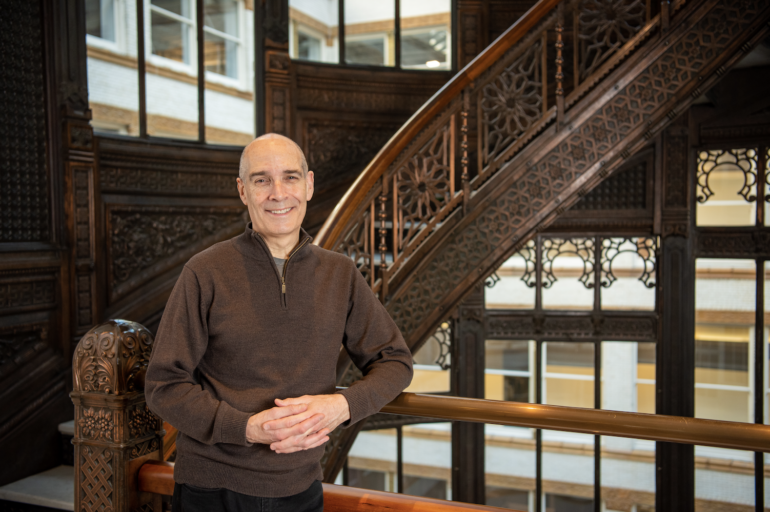Geoffrey Baer is a man well-known to many Chicagoans: he’s led tours of Chicago communities, both onscreen and in person, on the ground and in the air, revealing new perspectives on Chicago history, culture and people.
Raised in Highland Park and Deerfield, Baer is an eight-time Emmy Award-winning public television writer, producer and program host. Known for feature-length programs about the architecture and history of Chicago, including most recently Chicago by ‘L’, The Great Chicago Quiz Show and Beyond Chicago from the Air, he also hosted the PBS series 10 that Changed America about the built environment across the country.
On March 7 at 7pm CST will be the WTTW premiere of Baer’s new show “The Most Beautiful Places in Chicago”. On this program, Baer walks us through Chicago’s most magnificent and meaningful locations, many of which center around a marvelous architectural triumph and feature stories of people behind the places.
“This show is unlike any I’ve done before,” said Baer. “I thought I was after visual beauty alone. But meeting the people connected with these places and hearing their stories took the beauty to a deeper, emotional level. Capturing this for our viewers was unforgettable.”
On Becoming ‘Jazzed’ About Architecture
Baer credits his college study abroad program with first igniting his passion for architecture.
“I studied in Europe for my junior year, and one of our professors was a professor of architecture, and it was a class in the way cities grow and develop,” Baer recalls. “We went all over Europe, looking for the Roman roots and learning about the whole sweep of architecture. And there it was, right at our feet!”
Back stateside, it took just one of Chicago’s famed architecture tours to set Baer down a path to a role with the Chicago Architecture Foundation — which later became the Chicago Architecture Center. “I ended up teaching at the Chicago Academy for the Arts, and one day, we took our kids on an architecture tour,” he recounts. “I just got so jazzed from this tour! The guide told me about the Chicago Architecture Foundation. So, I took the docent training, and started giving tours. That was in 1987.”
Baer is still giving architectural tours of Chicago — both on his PBS television programs and in-person on the streets of Chicago — and he still seems “jazzed,” drawing inspiration from showing others the city’s “completely awe-inspiring, jaw-dropping amazing places.”
Many Dazzling Spaces
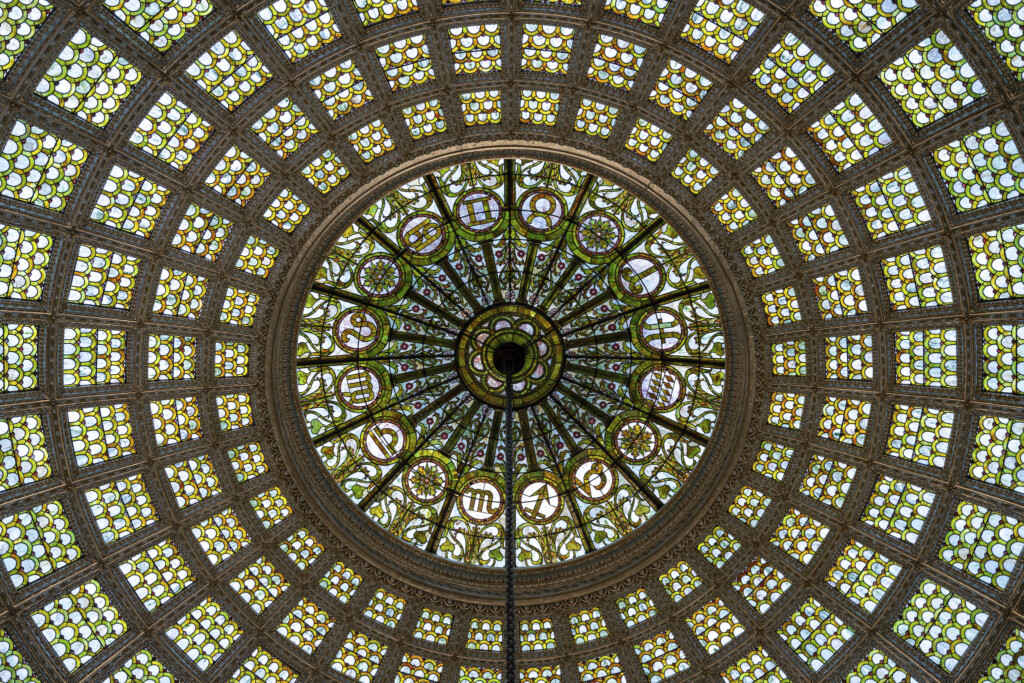
Baer clearly takes a great deal of pleasure in introducing Chicagoans and out-of-towners to the architectural masterpieces that tower over our downtown area and others that are sometimes hidden in plain sight.
“Anytime I take people into the Chicago Cultural Center, which was originally the Chicago Public Library, we go in on the Washington Street side, and all the way up the marble stairway the walls are encrusted with Tiffany mosaics. And then you go through these arches and into this domed space where you see the largest Tiffany glass dome in the world. If I’m taking friends on an impromptu architecture tour, I always end with that space. And it is like the biggest payoff in the world when you go in there. They’re speechless at the beauty of that space. The intricacy! How could anybody not only conceive of this space but execute it? It’s just dazzling. And that’s just one of so many dazzling spaces in Chicago.”
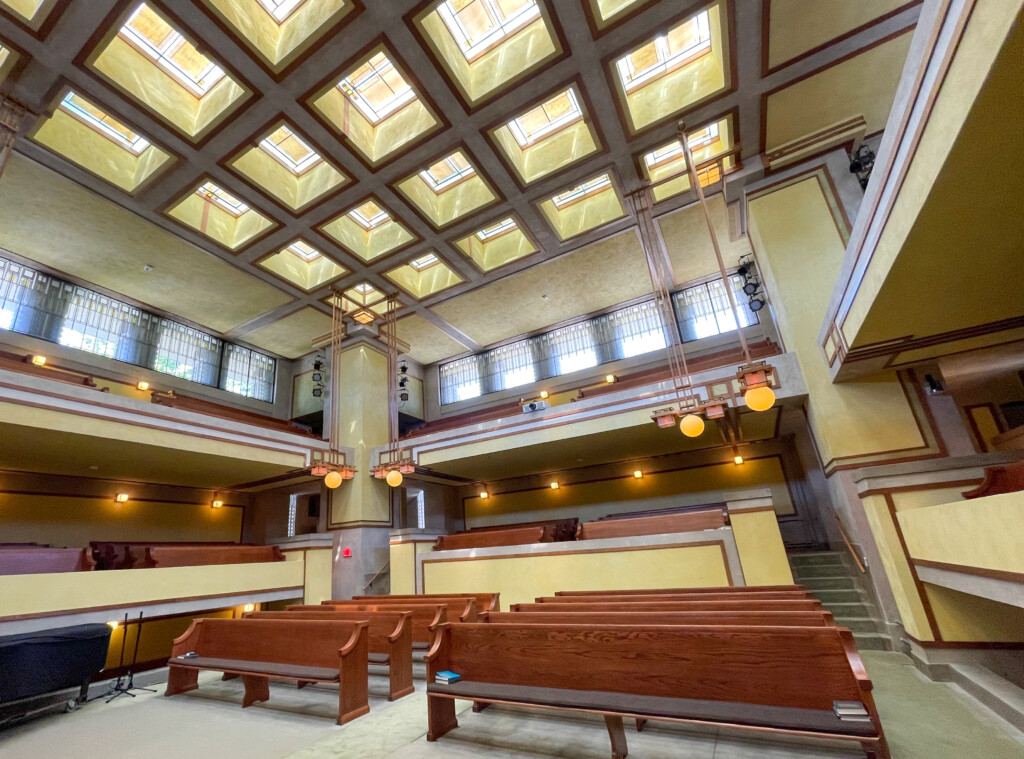
Baer’s new WTTW tour goes beyond the Chicago city limits, and he’s adept at drawing comparisons between works of architectural genius across the larger Chicagoland area. I ask him about Unity Temple in my hometown of Oak Park, which has recently been restored to better showcase this epic work of Frank Lloyd Wright.
“With Unity Temple, Wright makes a complete, holistic statement, a three-dimensional experience,” Baer explains. “I’m always amazed by the ability of architects to think in three dimensions in terms of volume, and how spaces relate to one another. In those days, Wright had to deal with the street cars going down Lake Street, so he built this big concrete fortress, you know, against the sounds of Lake Street.”
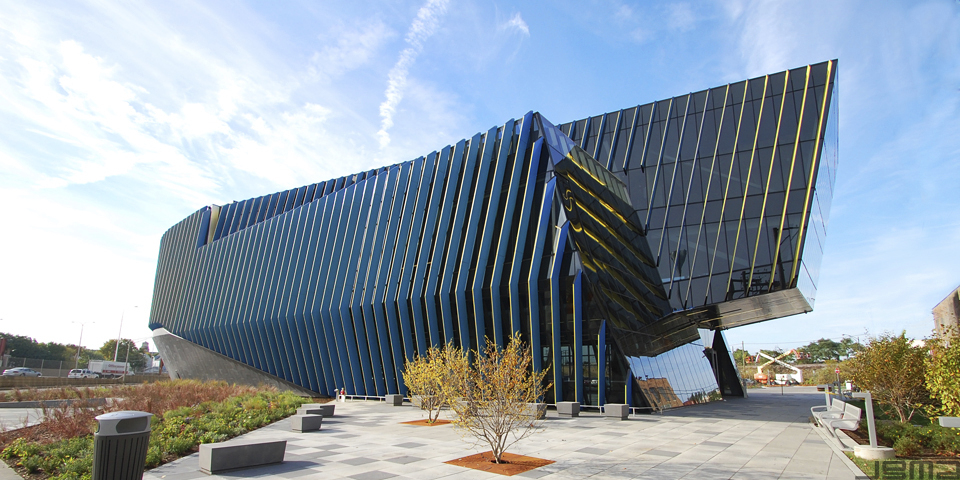
Similarly, Juan Gabriel Moreno built a double-wall at El Centro Library and Learning Resource Center for Northeastern Illinois University; in this way, classrooms are insulated from the sounds of the Kennedy expressway right outside.
“El Centro is a beautiful building,” says Baer, “but what’s doubly beautiful about it is the meaning of the building, that it’s a billboard of opportunity for immigrants, many of whom go to this university. To me, it was particularly gratifying and moving to hear people talk about not just visually what makes these places beautiful, but the meaning of these places for them.”
What gives these beautiful places their meaning — and much of their beauty — is the people who made and live among such beautiful places in Chicago, a continuing theme in Baer’s WTTW program.
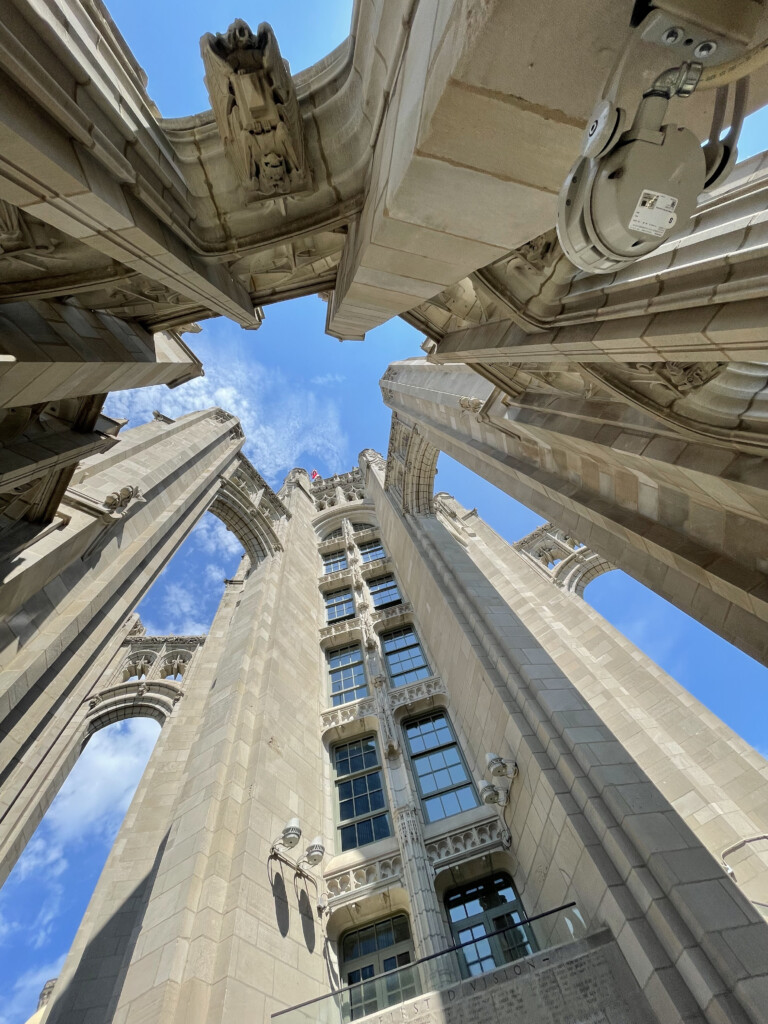
Sullivan Believed 1893 Columbian Exposition Set Architecture Back 50 Years
Many major Chicago buildings of the 19th and early-20th centuries reflect the popularity of Gothic and Neoclassical architecture, which are European styles. Talking about the Gothic Revival style of buildings like Tribune Tower or the University of Chicago, I asked Baer how he felt about architects transplanting European styles into the Midwest. Was this an easy fit, or a docile surrender to the fashion of the times?
“I see it in historical context,” Baer continued. “The City Beautiful Movement was inspired by Burnham and his Neoclassicism at the Columbian Exposition of 1893. That World’s Fair inspired a rage for Neoclassicism, and you see it in early 20th century buildings like the Wrigley Building in Chicago and New York’s Grand Central Station.”
At the dawn of the new century, a conflict was shaping up between those who wanted to continue European architectural traditions and those who were looking to craft a bold new look for what was still a relatively new city.
“Some Chicago architects were deeply offended by Neoclassicism,” Baer explained. “Louis Sullivan, who predates the City Beautiful Movement and was involved in the first wave of Chicago skyscrapers, felt his buildings were unlike any that had ever been built before. And it was offensive to him when other architects designed buildings with Gothic flying buttresses and Roman columns. He thought buildings should be as original as the technology that allowed them to be built. That’s why his buildings were all about structure and the natural surroundings of the Midwest. He said the Columbian Exposition would set architecture back 50 years.”
Mies and the Modernists Glorify Structure
“And then you have Mies van der Rohe and the modernist movement in the later-20th century going back to that same view, which is that dressing up a building with historical styles is just plain dishonest. Because, according to Mies,” Baer continued, “what you really should do is glorify the structure that makes the building possible not simply create historical caricatures.”
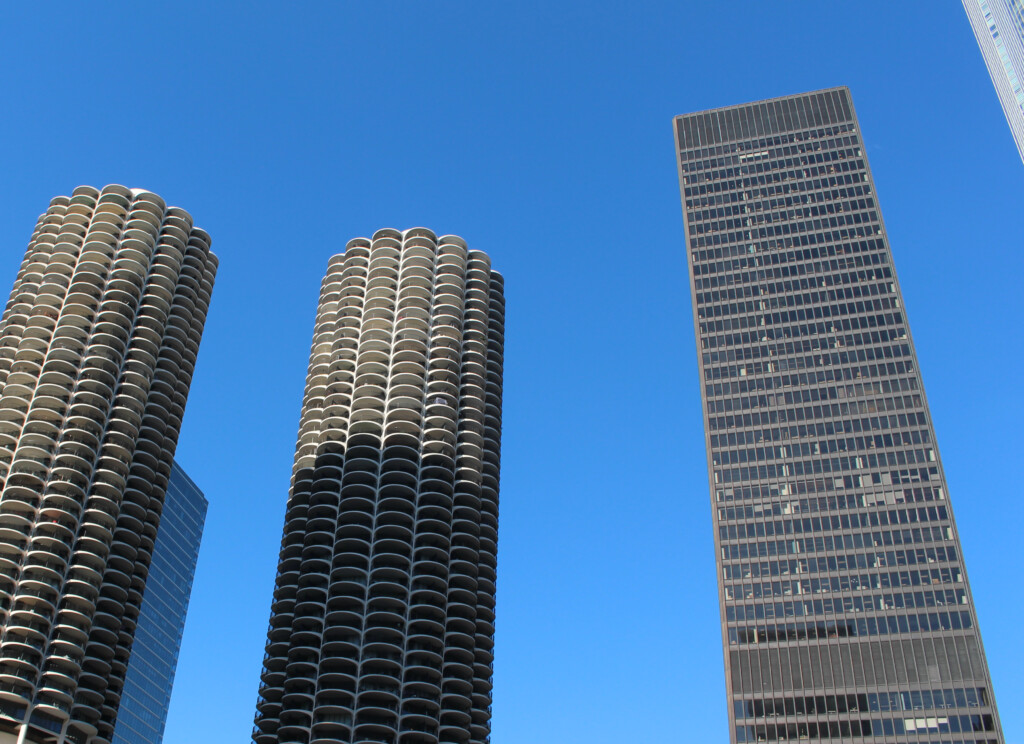
Not all architects welcomed the steel-and-glass style of Mies. According to Detlef Mertin in his comprehensive study of Mies, the architect was called boring, anti-historical and authoritarian. Urbanists riled against the destruction of the traditional city and the endless proliferation of neutral glass boxes for which he seemed to stand.
Baer, however, said of Mies’ Chicago architecture, “I love them. You look at Federal Center, the AMA building, Crown Hall and the Illinois Institute of Technology, there’s an obsession with detail in those buildings. God is in the details, and every detail is just totally thought out. But with corporate modernism in the 1950s, the style became fashionable, and you get lesser architects. Look at Sixth Avenue in New York: it’s a wall of blank facades, all set back from the street with these lifeless empty plazas in front.”
Finding Wonderful People
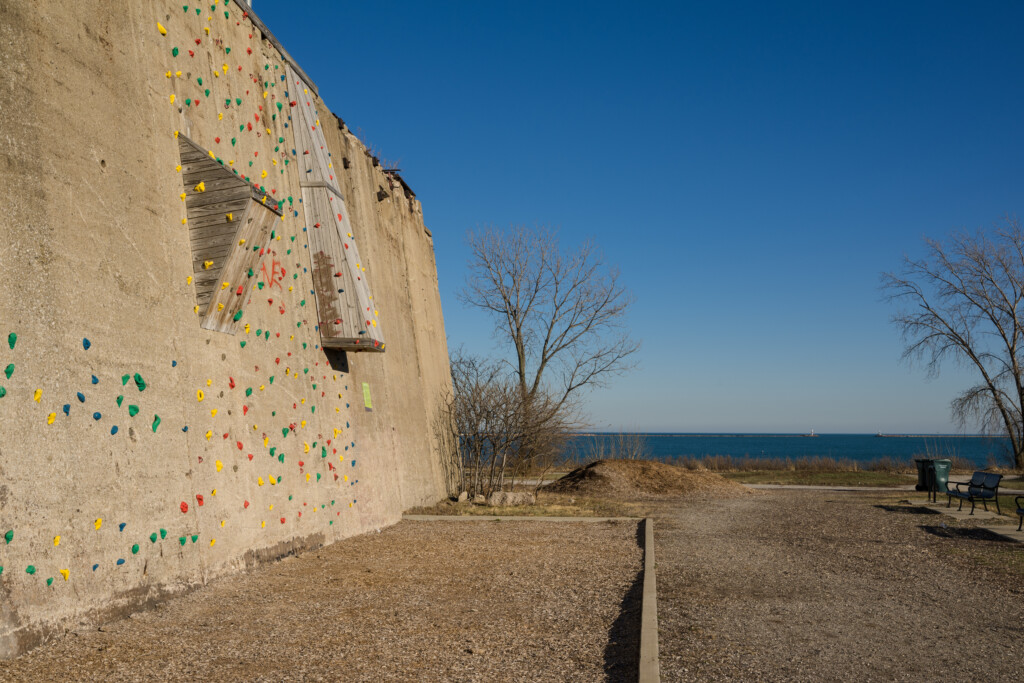
Baer’s “The Most Beautiful Places in Chicago” covers much more than famous architecture. He also visits the old and now largely demolished U.S. Steel South Works, where huge cement partitions have been converted into climbing walls, as well as the welcoming pagoda in Ping Tom Park in Chinatown where you stop when you take the water taxi from the West Loop. Throughout all his stops on this tour, Baer pauses to talk with people — architects, artists and others — who have helped create the look and feel of the city.
“We found wonderful people to talk to,” Baer said. “There’s beauty in encounters with people like the helpful lady in the lobby of Tribune Tower who receives visitors coming from countries where they don’t have the freedoms that are proclaimed on the Tower’s walls, or when we interview the sculptor who created the statue of steel workers. To me, it was particularly gratifying and moving to hear people talk about not just visually what makes these places beautiful, but why the meaning of these places is itself beautiful.”
“The Most Beautiful Places in Chicago” airs on March 7th at 7pm on WTTW, and it will stream on the WTTW website, as well as on the PBS app. Baer wants all readers to know that when the show airs, the first viewer who pledges $5,000 to WTTW will win a 45-minute scenic tour on a private four-seater Cirrus airplane. There is a weight limit, of course, so if there’s a guest or two and the limit is not yet reached, Baer will come along and enjoy the ride with you — and, of course, he can talk you through some of the sights you’ll see from the air.
More from Better:
- 18 Fulton Market Restaurants You Need to Check Out
- Ignatian Spirituality Project: Help Bring Healing and Recovery to Those Most in Need – Your Gift Will Be Matched and Change a Life
- Should You Join One of Chicago’s Most Sought-After Members-Only Clubs?
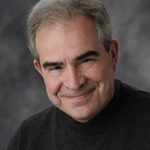
David Hammond is Dining and Drinking Editor at Newcity and contributes to the Chicago Tribune and other publications. In 2004, he co-founded LTHForum.com, the 15,000 member food chat site; for several years he wrote weekly “Food Detective” columns in the Chicago Sun-Times; he writes weekly food columns for Wednesday Journal. He has written extensively about the culinary traditions of Mexico and Southeast Asia and contributed several chapters to “Street Food Around the World.”
David is a supporter of S.A.C.R.E.D., Saving Agave for Culture, Recreation, Education and Development, an organization founded by Chicagoan Lou Bank and dedicated to increasing awareness of agave distillates and ensuring that the benefits of that awareness flow to the villages of Oaxaca, Mexico. Currently, S.A.C.R.E.D is funding the development of agave farms, a library and water preservation systems for the community of Santa Catarina Minas, Oaxaca.
